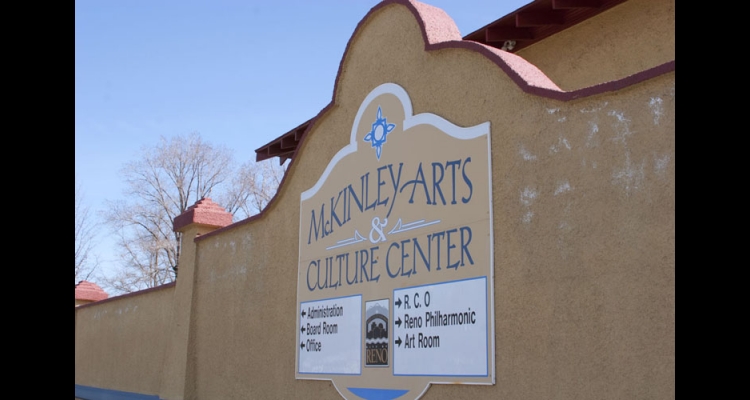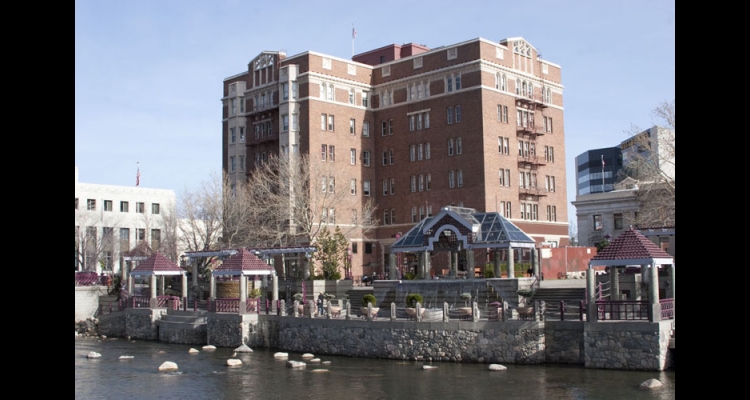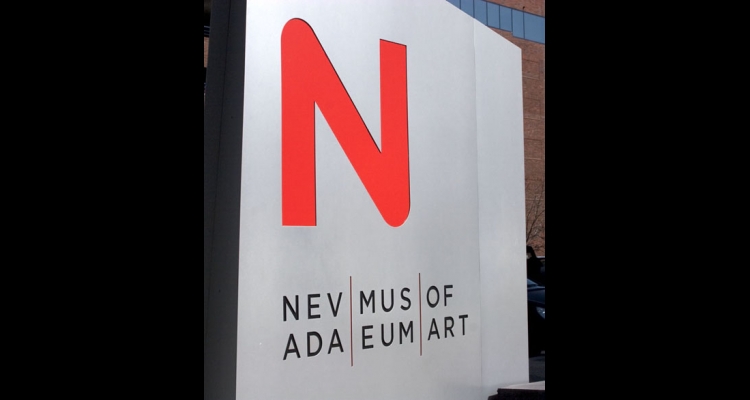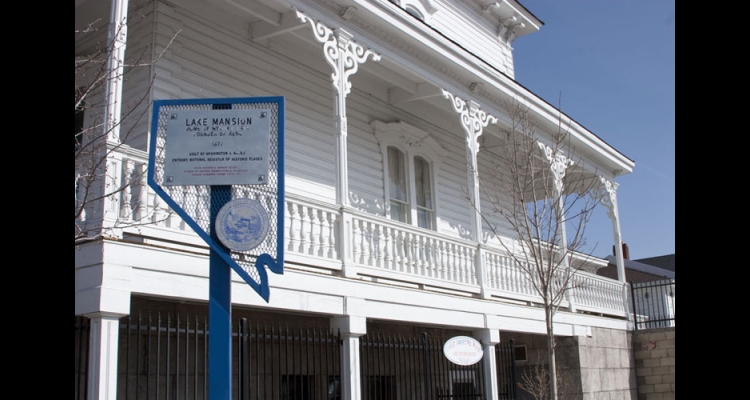Reno Arts and Culture Commission
The mission of the City of Reno's Arts & Culture Commission is to "secure, enhance, advocate and fund excellence in the arts in the City of Reno." Their primary activities include managing a grant program for arts organizations, overseeing the city's public art program, running several galleries in City Hall and other facilities, managing the McKinley Arts & Culture Center and rental spaces in other city-owned buildings, serving as a resource for and partner with other cultural organizations in the area, and advising the city on cultural issues. The Commission is part of the city's Parks, Recreation and Community Services Department.
The Commission began as the C.I.T.Y. 2000 Arts Commission in 1990 and first received city funding from a percentage of room tax funds in 1991. The first year's budget was $100,000, of which $40,000 of which went to arts and cultural organizations as grants. The rest of the money went toward developing a cultural master plan, creating the City Hall gallery, installing public art, and preliminary planning for an arts district. In 2000 the agency became the Arts and Culture Commission, and in 2009 their budget totaled $1.3 million, with $536,000 of that going to other organizations as grants and pass-through funding, a testament to the city's belief that the arts help make Reno a great place to live, work, and visit.
Reno's annual Artown event, a monthlong arts festival held every July, was started by the Commission's marketing committee in 1996. That event became an independent nonprofit organization in 1999, although it still receives significant city funding, as do many of the other participating arts organizations. The Commission also sponsors Artown's opening night events.
The city's 2% for Art Ordinance, which specifies that two percent of the budget for any city construction or renovation projects, including those in parks, must be spent on art, is managed by the Commission. There are now forty-five permanent outdoor art works and another sixty-two within city buildings. Between 2004 and 2009, $1.7 million worth of new art was installed. The pieces include sculptures, fountains, murals, mosaics, wind sculptures on lamp posts in the Arts District, railings, and bridges, as well as paintings, prints, photographs, collages, weavings, and ceramics in the City Hall collection. The Commission has also published a map of public art, and staff members lead art walking tours downtown on the first Friday of every month at noon, starting at City Plaza. The Commission also manages several other galleries. The McKinley Arts & Culture Center has two spaces for exhibitions, featuring emerging local and regional artists. And the Southside Cultural Center Gallery focuses on representing the varied cultural and ethnic groups of northern Nevada.
The grants program awards challenge grants to major arts organizations, project grants, cultural event grants, and public art challenge grants. Some of the many organizations funded include the Nevada Museum of Art, the Nevada Opera, the Reno Chamber Orchestra, the Reno Basque Club, Sierra Arts Foundation, Bruka Theater, Friends of the Washoe County Library, Nevada Hispanic Services, the Reno Irish Dance Company, VSA arts of Nevada, the Nevada Bluegrass Project, several departments at the University of Nevada, Reno, Sierra Nevada Ballet, and community access television.
The Commission is very involved in projects that benefit the arts community as a whole, and tries to support infrastructure and fund existing organizations rather than duplicate services. They recently installed a new sound system at Wingfield Park Amphitheater, for instance, and they support the Arts District and Artown events that benefit the entire community. They helped VSA arts of Nevada in their move of the Lake Mansion from the convention center grounds to downtown, providing a city-owned parking lot as a location for the building. They worked with Sierra Arts and Artspace to purchase the old Riverside Hotel for conversion to affordable artist live-work spaces. They helped the Lear Theater get a Save America's Treasures grant for planning and renovation of the Christian Science Church into a theater. And they have helped fund upgrades to the Pioneer Theater, which is used by a number of local performing arts organizations.
The Commission developed the first Cultural Master Plan for the city in 1994. That plan has been updated most recently in 2001, and in 2010 was in the process of being revised again. The existing plan addresses issues such as facilities, parking, funding for organizations and individual artists, leadership, collaboration, board development for arts organizations, marketing, cultural tourism, arts education, support for artists, and civic design and aesthetics.
Christine Fey, who has worked as the manager for the Commission since its inception, says that the city is extremely supportive of arts and culture and has maintained funding for the office and its grants program even in difficult economic times. City council members see the benefit of a strong arts community and a variety of activities for residents and visitors, especially when times are tough. One member said he would rather drive on bumpy streets if he had somewhere worthwhile to go than have smooth roads but nothing worth driving to. Many city council members are personal funders of the arts and sit on boards of arts and cultural organizations. Ms. Fey herself has been recognized as a leader and a driving force in Reno's cultural growth, and received a Governor's Arts Award in 2006 for Service to the Arts.
The Arts Commission consists of a nine-member board of registered voters in the Truckee Meadows, the majority of whom reside in the city of Reno. Three seats are specifically set aside: one for a professional artist, one for an arts educator, and one for an architect or designer. There are three standing subcommittees as well, for grants, marketing, and public art.
Article Locations
Related Articles
None at this time.




